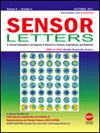荧光氧化锌量子点探针通过荧光共振能量转移研究葡萄糖-葡萄糖氧化酶相互作用
引用次数: 5
摘要
在这项工作中,重点是利用荧光氧化锌量子点作为探针,利用FRET方法分析GOx和葡萄糖的相互作用。采用溶胶-凝胶技术和绿色合成法分别制备了ZnO和ZnOext荧光量子点作为供体和受体纳米探针。利用紫外可见吸收、荧光、红外光谱、x射线衍射和场发射扫描电镜对QDS进行了结构、光学和形态表征。通过tac图估计ZnO和ZnOext量子点的带隙分别为3.49和3.35 eV, XRD显示生长晶体的纤锌矿结构。利用Benesi-Hildebrand图对ZnO - gox和ZnOext - gox进行系统吸收研究,发现ZnO和ZnOext的结合常数分别为-8.3361 M -1和-2.57646 M -1。由Stern-Volmer方程得到ZnO/ ZnOext-GOx共轭物的结合常数分别为1.0466 μM -1和1.97 μM -1,表明ZnO/ ZnOext-GOx在体系中处于静态猝灭状态。CD光谱揭示了共轭体系中蛋白质的天然状态。在ZnOext-GOx系统中,恒定Förster半径(Ro)表明平均< κ2 >为2/3,与FRET系统中通常假设的供体-受体距离无关,在ZnOext-GOx系统中为~ 4.5%,在ZnOext-GOx系统中为~ 5%。表明早期系统的能量传递优于正式系统。以ZnOext-GOx作为供体探针,该技术对葡萄糖的生理反应范围为60 mg - 440 mg/dl,比ZnO-GOx系统对葡萄糖的反应更好,并与量子点表面存在的植物化学物质相关。本文章由计算机程序翻译,如有差异,请以英文原文为准。
Fluorescent ZnO Quantum Dot Probe to Study Glucose–Glucose Oxidase Interaction via Fluorescence Resonance Energy Transfer
In this work, emphasis is to utilize FRET method to analyze GOx and glucose interaction using fluorescent ZnO QDs as the probes. Fluorescent ZnO and ZnOext QDs were synthesized using sol– gel technique and green synthesis method as donor and acceptor nanoprobes.
Structural, optical and morphological characterization of QDS were carried out using UV-visible absorption, fluorescence, FTIR, XRD and field emission scanning electron microscopy. Band gap estimated from Tauc plot is 3.49 and 3.35 eV for ZnO and ZnOext QDs and XRD reveal Wurtzite
structure of grown crystals. Systematic absorption study for ZnO–GOx and ZnOext–GOx reveal association constant of –8.3361 M–1 and –2.57646 M –1 for ZnO and ZnOext using Benesi-Hildebrand
plot. The binding constant obtained from Stern-Volmer equation is 1.0466 μM –1 and 1.97 μM –1 for ZnO/ZnOext–GOx conjugate and suggest static quenching in the system. CD spectroscopy reveal native state
of protein in conjugate sytem. Constant Förster radius (Ro) in ZnOext–GOx system suggest the average 〈κ2〉 as 2/3 and is independent of donor–acceptor distance as normally assumed in FRET system varies
from ∼4.5% in ZnO–GOx and ∼5% in ZnOext–GOx system. It indicate better energy transferrin earlier system than formal. The physiological range of glucose from 60 mg–440 mg/dl using this technique in which ZnOext–GOx
as donor probe exhibit better response towards glucose than ZnO–GOx system and correlated to the presence of phyotochemicals on the QD surface.
求助全文
通过发布文献求助,成功后即可免费获取论文全文。
去求助
来源期刊

Sensor Letters
工程技术-电化学
自引率
0.00%
发文量
0
审稿时长
6 months
期刊介绍:
The growing interest and activity in the field of sensor technologies requires a forum for rapid dissemination of important results: Sensor Letters is that forum. Sensor Letters offers scientists, engineers and medical experts timely, peer-reviewed research on sensor science and technology of the highest quality. Sensor Letters publish original rapid communications, full papers and timely state-of-the-art reviews encompassing the fundamental and applied research on sensor science and technology in all fields of science, engineering, and medicine. Highest priority will be given to short communications reporting important new scientific and technological findings.
 求助内容:
求助内容: 应助结果提醒方式:
应助结果提醒方式:


